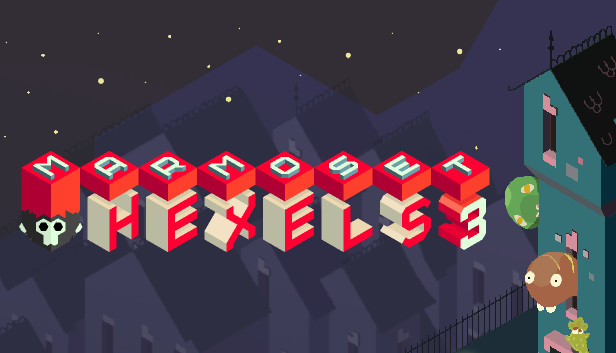
I repositioned the layer ordering so that the shadow appeared behind the icosahedron and reduced the opacity of the layer. To create the animated shadow, I duplicated the icosahedron layer and darkened the image using Layer Properties>Hue Saturation. I then rotoscoped the imported sequence using the Line tool (L). gif onto the canvas which automatically added 34 frames to the Timeline. The icosahedron shape was created by dragging a. The shape was copied/pasted below the original shape and the Line (L) and Fill (G) tools were used to finish the shape. This created a solid shape instead of an outline. The pentagonal columns were created with the ‘filled’ box checked on the top toolbar. Pressing Enter commits the final shape.įinishing touches were added to the pentagon shape using the Line (L) and Fill (G) tools. There are blue draggable control points that can be used to resize and reposition the shape.

#Marmoset hexels trial update
The example above displays a live update of an increase in the shape sides from 5 to 19 sides. If a shape is already drawn, settings on the toolbar can be changed and the drawn shape will be updated on the fly. Select two points on the canvas and drag the shape out to draw pentagon.

For the pentagon shape, the numerical input is set to 5. The top toolbar allows you to choose your shape, change the number of sides and change the width of the outline. The Super Shape tool can be used to draw different types of shapes in isometric view. The addition of the Super Shape tool (L) to Hexels 3.1 can be accessed via the shape tools rollout. The scene is made up of several pentagon shapes. The image is comprised entirely of pixel layers and the Super Shape tool (L) was used to create other-worldly rock formations. Let’s create the astronaut scene using the same template. It is important to note that adjustable pixel resolutions, like the examples above, only apply to vector layers. Notice the change in pixel count for Hexel Size and Final Image. The change in pixel resolution can be adjusted by raising and lowering the Hexel Resolution value. The trixel is converted to pixels with stair-step edges. When drawing on a vector layer, notice what happens when switching from Vector Mode to Pixel Mode. There are two types of layers: a Vector Layer (indicated with a triangle symbol on its thumbnail) and a Pixel Layer (indicated with a pixel symbol on its thumbnail). The Canvas is set to Pixel Mode and the Size is 256×256 pixels.īelow the Document tab is the Layers tab. Let’s take a closer look at the current template settings. It contains settings for the canvas and can be changed to suit. The Document tab is located on the right (circled). The Pixel Trixels 256p template is a good preset to demonstrate differences between the vector and pixel document modes. In this article, we’ll go over some of the primary features that made this piece possible. Hexels gives you the flexibility to create awesome pixel art using dedicated pixel modes, shape tools and a host of other fantastic features.


 0 kommentar(er)
0 kommentar(er)
